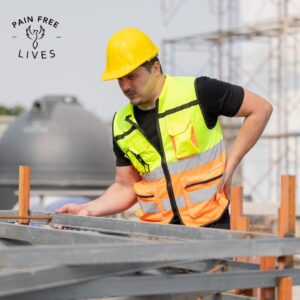For athletes and fitness enthusiasts, there’s nothing quite like the satisfaction of pushing past limits, running faster, lifting heavier, or training longer than before. But there’s also the silent question lingering in the background: Am I setting myself up for problems down the road? Joints are the body’s shock absorbers, carrying the stress of every squat, sprint, and press. Without proper care, the drive to train harder can come at the cost of long-term joint health. The good news is, you don’t have to choose between progress and protection. With the right strategies, you can push your performance while safeguarding your body for years to come.
Why Joint Health Matters More Than You Think
When people think of training injuries, they often picture pulled muscles or sprained ankles. But muscles heal relatively quickly; joints are another story. Cartilage, tendons, and ligaments don’t have the same blood supply as muscle, meaning recovery is slower and damage can be lasting. Over time, the wear and tear from repeated stress can lead to arthritis, chronic pain, or limited mobility conditions that can derail not just your athletic goals but your quality of life. Protecting joint health isn’t just about preventing injury today; it’s about ensuring you can stay active and strong decades from now.
Understanding the Difference Between Good Stress and Bad Stress
Training itself is a form of controlled stress. When applied correctly, it stimulates stronger muscles, better endurance, and improved performance. This is good stress. But when stress is excessive or poorly managed, it crosses the line into bad stress. Instead of adapting, the body breaks down.
For joints, this tipping point often shows up as persistent swelling, stiffness, or pain that doesn’t go away after rest. It’s the body’s way of saying, You’ve pushed too far. The challenge is learning to ride that fine line: enough stress to spark progress, but not so much that it causes long-term harm.
The Role of Recovery in Joint Protection
One of the most overlooked parts of training is recovery. It’s tempting to think results come only from grinding harder, but progress happens in the downtime when the body repairs itself and builds resilience. Recovery for joints is about more than just taking a rest day. It includes quality sleep, proper nutrition, and mobility work that helps lubricate the joints and reduce stiffness. Even small routines like foam rolling, dynamic stretching, and low-impact activities such as swimming or cycling can keep joints nourished and supported.
Athletes at every level, from professionals to weekend warriors, often underestimate recovery until pain forces them to slow down. Building it in from the start ensures your joints remain ready to handle the demands of harder training.
Smart Training: Techniques That Protect Your Joints
Training harder doesn’t mean training recklessly. Simple adjustments can make a big difference in how your joints hold up under pressure.
- Form over ego: Lifting with proper technique protects joints from unnecessary strain. Sacrificing form for a heavier weight is one of the quickest ways to shorten your athletic lifespan.
- Progress gradually: Jumping from moderate training to extreme loads leaves joints unprepared. Incremental increases in intensity give tendons and ligaments time to adapt.
- Mix it up: Repetitive motions can wear down specific joints. Cross-training introduces variety, giving overworked joints a chance to recover while still challenging the body.
- Listen to warning signs: Sharp pain or swelling is not “normal.” It’s a red flag that shouldn’t be ignored. Addressing small issues early prevents them from becoming major setbacks.
Nutrition and Joint Health: Fueling the Foundation
What you put in your body directly affects how well your joints function. A diet rich in anti-inflammatory foods like fatty fish, leafy greens, berries, and nuts can reduce wear and tear at the cellular level. Hydration also plays a crucial role; water keeps cartilage cushioned and flexible. On the other hand, excessive processed foods, sugar, and alcohol can worsen inflammation and accelerate joint breakdown.
Some athletes also benefit from supplements like omega-3 fatty acids, collagen, and vitamin D, though it’s always wise to consult with a physician before adding these to your regimen. Nutrition won’t replace good training practices, but it lays the foundation for joints that can withstand the demands of harder workouts.
The Promise of Regenerative Medicine
For those already feeling the strain, modern medicine offers options that go beyond painkillers or surgery. Treatments like Platelet-Rich Plasma (PRP) and Bone Marrow Aspirate Concentrate (BMAC) use the body’s own healing factors to repair damaged tissues and support joint health. These regenerative approaches are becoming increasingly popular among athletes who want to stay competitive without compromising their future mobility. While not a substitute for prevention, they represent a powerful tool when joints need extra help.
Train Hard, Protect Harder
The pursuit of performance and the preservation of joint health don’t have to be at odds. In fact, the strongest athletes are often the ones who understand how to balance the two. Training harder is about more than pushing limits; it’s about training smarter, recovering better, fueling wisely, and staying open to innovative treatments when necessary.
Recovery is just as important as training. Athletes and fitness enthusiasts can benefit from foam rollers, resistance bands, and portable ice packs https://www.amazon.com/shop/painfreelives, tools that help protect joints, improve flexibility, and prevent overuse injuries. Small additions to your routine can make a big difference in keeping your joints strong for the long run.







